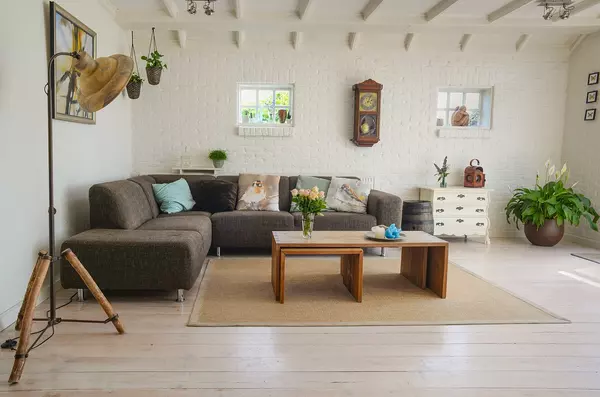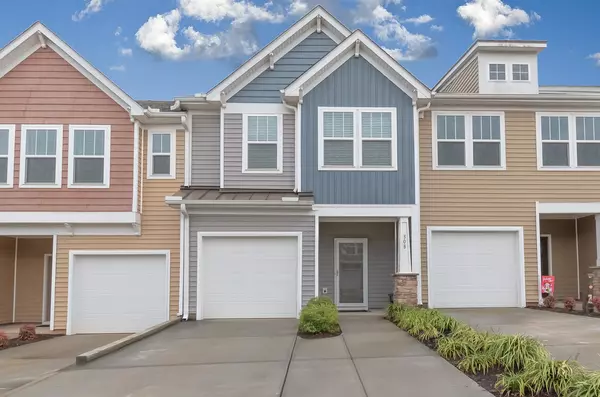
Navigating Your First Home Flip: Key Considerations for Success
Venturing into your first home flip is an exciting yet challenging endeavor. Whether you're driven by the potential for profit or the thrill of transforming a property, success in the world of house flipping requires careful planning and thoughtful consideration. In this guide, we'll explore essential factors to contemplate when embarking on your inaugural home flip, ensuring a smoother journey towards a successful investment opportunity. Conduct Comprehensive Market Research: Understanding the real estate market is fundamental to a successful home flip. Research local property values, neighborhood trends, and the demand for renovated homes. Identifying target markets will guide your property selection and investment strategy. Establish a Realistic Budget: Creating a comprehensive budget is crucial to avoid financial pitfalls. Factor in the purchase price, renovation costs, holding expenses, and a contingency fund for unforeseen issues. A well-thought-out budget will serve as a roadmap, helping you stay on track to maximize your profit potential. Select the Right Property: Choose a property with potential for a profitable return on investment. Look for homes in desirable neighborhoods with room for improvement. Consider the property's condition, renovation potential, and its appeal to your target market. Build a Reliable Team: Success in home flipping often relies on a competent and trustworthy team. Engage with professionals such as a real estate agent, contractors, inspectors, and designers. Building strong relationships with experts will streamline the flipping process and enhance the quality of your investment. Understand Renovation Costs and Prioritize: Thoroughly assess the property's renovation needs and estimate the associated costs. Prioritize renovations that will add the most value, focusing on both aesthetic appeal and structural improvements. Balancing quality and cost-effectiveness is key to a successful flip. Consider the Time Factor: Time is a critical element in home flipping. Understand the local market's seasonality, and factor in the time required for renovations, listing, and potential sales delays. Efficient project management will positively impact your bottom line. Legal and Regulatory Compliance: Familiarize yourself with local building codes, zoning regulations, and permit requirements. Non-compliance can lead to delays and fines, impacting both your timeline and budget. Consult with professionals to ensure your project adheres to all legal requirements. Evaluate Your Exit Strategy: Define your exit strategy before starting the flip. Determine whether you'll sell the property immediately, rent it out for additional income, or explore other creative options. Understanding your goals will guide your decision-making throughout the process. Market Your Property Effectively: Invest time and effort in marketing your renovated property. Leverage both online and offline channels, emphasizing the property's unique selling points. High-quality photos, staging, and engaging descriptions can significantly impact potential buyers' interest. Your real estate partner can help you with all of the required tasks for a successful sale. Embarking on your first home flip is a thrilling journey that demands careful consideration of various factors. By thoroughly researching the market, creating a realistic budget, assembling a reliable team, and prioritizing renovations, you'll set yourself on a path to a possible success. Remember, each flip is a learning experience, and with careful planning, you'll be well-equipped to navigate the challenges of the real estate market. Happy flipping!

Unlocking the Power of Presentation: A Guide to Staging Your Home for Maximum Buyer Interest
Selling a home is not just about putting a 'For Sale' sign in the front yard; it's an art that involves showcasing your property in the best possible light. One highly effective way to attract potential buyers is through home staging. Staging involves arranging and decorating your home to highlight its strengths and create a welcoming atmosphere. In this blog, we'll explore tips and strategies for sellers to stage their homes to generate maximum buyer activity. First Impressions Matter: Curb Appeal Enhance the exterior: A well-maintained exterior creates a positive first impression. Trim the lawn, add some potted plants, and ensure the entrance is clean and inviting. Fresh coat of paint: Consider painting the front door and any trim that needs a touch-up. A vibrant door color can make your home stand out. Declutter and Depersonalize: Create space: Remove unnecessary furniture and personal items to make rooms appear larger. Buyers want to envision their own belongings in the space. Neutralize decor: While your personal taste may be bold, neutral colors on walls and furniture allow buyers to visualize their own style. Let the Light In: Maximize natural light: Open curtains and blinds to let sunlight flood in. Well-lit rooms feel more spacious and welcoming. Adequate artificial lighting: Ensure all bulbs are working, and consider adding lamps to darker areas. Good lighting can make a significant difference. Highlight Key Features: Showcase focal points: If your home has unique architectural features or stunning views, ensure they are prominently displayed. Arrange furniture strategically: Position furniture to emphasize the flow of rooms and highlight key features. Create a Neutral Canvas: Neutral decor: Opt for neutral colors in bedding, towels, and other accessories. It creates a clean, spa-like atmosphere that appeals to a broad range of buyers. Bring in splashes of color with your accent pieces. Replace outdated fixtures: Updated fixtures can modernize the look of a room without a major investment. Appeal to the Senses: Pleasant scents: Lightly scented candles or fresh flowers can add a welcoming aroma to your home. Soft background music: Playing soft, instrumental music can create a relaxing ambiance during showings. Keep a Clean and Well-Maintained Home: Deep clean: A spotless home communicates to buyers that it has been well cared for. Pay attention to details like grout lines, baseboards, and windows. Address repairs: Fix any visible issues, such as leaky faucets, squeaky doors, or chipped paint. A well-maintained home instills confidence in potential buyers. Staging your home is a strategic investment that can significantly impact the speed and success of your sale. By focusing on creating a welcoming, neutral, and visually appealing environment, you can capture the attention of potential buyers and maximize their interest in your property. Remember, a well-staged home tells a story that resonates with buyers and makes them feel like they've found their future home. For more tips on getting your home ready for sale, let's chat and come up with your success plan!

Unlocking the Perfect Moment: When is the Best Time to Sell Your Home
Selling your home is a significant decision that involves careful planning and consideration. One crucial factor that can significantly impact the success of your home sale is the timing. In this blog, we'll delve into the intricacies of real estate seasons and unveil the best time to sell your home for maximum profit. Understanding these nuances can make a substantial difference in attracting potential buyers and securing the best possible deal. Spring: A Flourishing Real Estate Season Spring is widely considered the prime time to sell a home. As the weather warms up, potential buyers emerge from winter hibernation, eager to explore new properties. Blooming gardens and sunny days create a visually appealing atmosphere, making your home more attractive to buyers. Families often prefer to move during the summer break to minimize disruption to their children's school schedules, making spring an ideal time to list your property. Summer: Ride the Wave of High Demand Summer continues to be a strong season for home sales. Longer days provide more opportunities for potential buyers to view homes after work. The vibrant atmosphere and pleasant weather make your home more inviting, potentially increasing its perceived value. Capitalize on the summer demand by showcasing outdoor spaces and emphasizing the unique features that make your property stand out. Fall: Harvesting Opportunities While not as popular as spring and summer, fall offers unique advantages for home sellers. Cooler temperatures can make home viewings more comfortable, and the autumn foliage can enhance your home's curb appeal. Buyers in the fall are often more serious, as they aim to settle into a new home before the holiday season. Winter: Strategic Timing for Less Competition Contrary to common belief, winter can be a strategic time to sell. With fewer homes on the market, your property may attract more attention from serious buyers. Capitalize on holiday spirit by tastefully decorating your home. A warm and inviting atmosphere can make a lasting impression on potential buyers. Some buyers may have urgency, such as relocation for work, making winter an opportune time for a quick sale. Conclusion: Determining the best time to sell your home requires a thoughtful analysis of market trends, local factors, and personal considerations. While spring and summer remain popular seasons, each time of the year presents unique advantages for sellers. Whether you choose to capitalize on the lively spring market or strategically list your property in the winter, understanding the dynamics of each season can help you make an informed decision and maximize your profit when selling your home. If you're considering selling your home, let's discuss when the right time might be for you. Contact me at 715.598.9900 or at brad@homcentric.com Here for you, when you're ready.
Categories
Recent Posts










